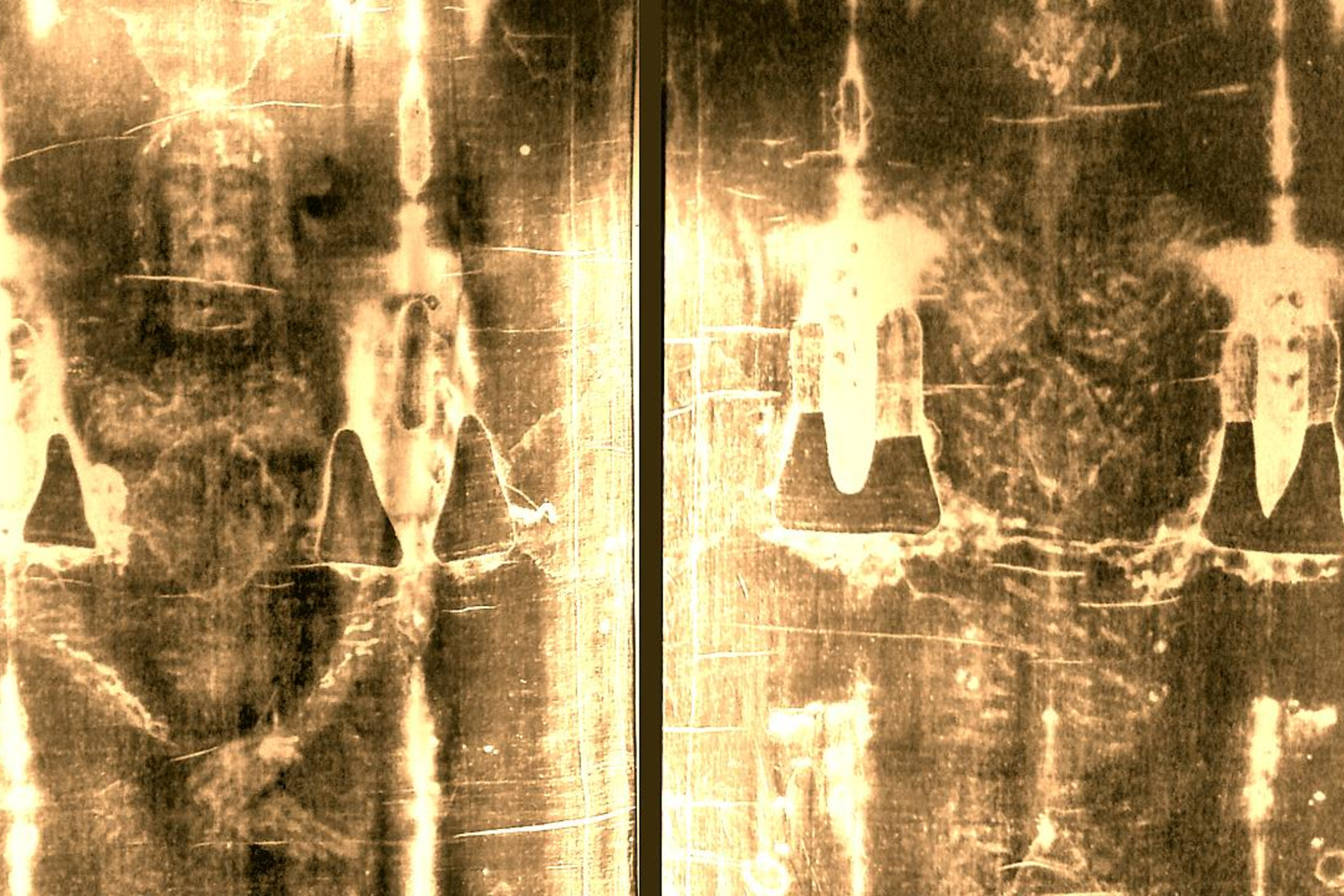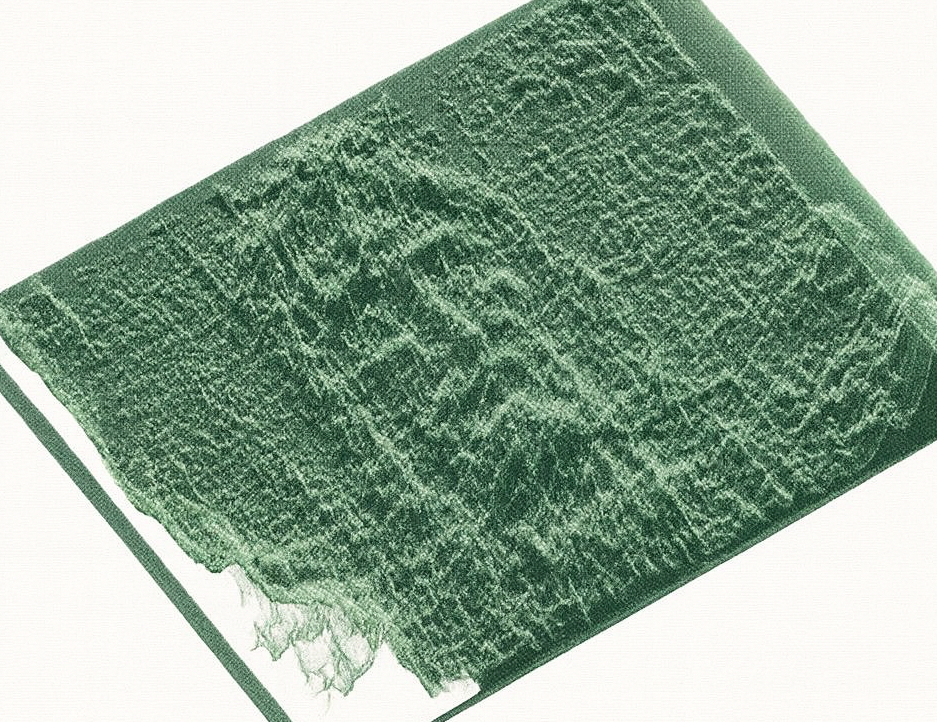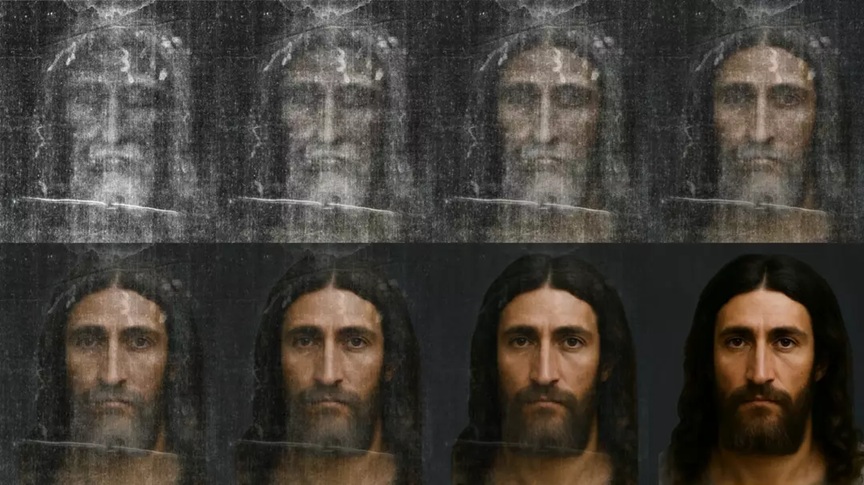Shroud of Turin

Scienctic Evidence on the Shroud of Turin
The Shroud of Turin is the most famous and studied relic of all religions in the World. The Shroud is believed to be the burial shroud of Jesus Christ. It is a linen cloth woven in a 3-over 1 herringbone pattern measuring 14 ft. 3 inches in length by 3 ft. 7 inches in width. It apparently covered a man who suffered the wounds of crucifixion in a way very similar to Jesus of Nazareth.
The cloth has a certifiable history from 1349 when it surfaced in Lirey, France, in the hands of a French nobleman – Geoffrey de Charny. It also has a somewhat sketchy traceable history from Jerusalem to Lirey, France – through Edessa, Turkey, and Constantinople. Due to the lack of a certifiable history of the cloth past 1349, many claim that the Shroud of Turin is a fake produced in the 13th Century.
The main characteristics of the Shroud are deposits of blood and a very faint negative image of a man on the Shroud. The blood deposits on the Shroud are real and of an AB type. Researchers have found that male DNA are also present on the cloth. The image was formed after the blood stains congealed on the cloth. Also the image and blood stains, relative to one another, are anatomically correct. It is impossible that a 13th-century forger could have accurately placed blood on the cloth without an image. This fact helps disprove any forgery argument.
The image on the Shroud is anatomically perfect and a perfect photographic negative. The fact that the image is a photographic negative was not even discovered until 1890. Photography was not invented until the 19th Century therefore a 13th Century forger would have no concept of a negative photographic image or know how to create one.
The image on the Shroud is formed only in the top 1/10 to 1/5 (0.02–0.06 mm) of each thread of the linen. The image was not produced by any paint, dye, powder, or other artistic chemical or biological agent and has no brush strokes. Multiple scientic tests have confirmed this. As of 2025 the image on the Shroud has not been able to be scientifically recreated. The cloth is suppose to be a fake from the 13th Century, yet modern science cannot reproduce it or state how it was created. Does that make any sense?
Analysis has been done on pollen and dirt from the Shroud Turin. This analysis traces the path of the Shroud all the way back to Jerusalem through Edessa, Turkey, and Constantinople. The presence of pollen grains dating back to First Century Palestine was found on the Shroud. Importantly, 13 of the pollen types are unique to Israel, and are found at both the Sea of Galilee and The Dead Sea. Also, scientists have found that dirt particles embedded in the Shroud of Turin that match limestone unique to the Jerusalem area. Later analysis showed that the limestone dust on the Shroud had the same spectral signature as travertine aragonite found in Jerusalem tombs. Forgers in the 13th Century had no ability to foresee that in the future pollen and dirt samples would be used to forensically tie an Shroud to a certain location and time.
Recent examination and research have determined the presence of Roman coins minted in Judea in 29 AD on Jesus’ eyes in the Shroud. The presence of coins on the eyes of Jesus was first identified via the photographs of Enrie (1931) and Secundo Pia (1898). The four raised letters “UCAI” on coins that identified them as the Jewish lepta, “widow’s mite” coins, copper coins minted by Pontius Pilate in 29 AD in Judea. Once again, a 13th Century European forger would not have knowledge of 1st Century Judean coins.
In 1976 an image of the Shroud of Turin was fed into NASA’s VP-8 Image Analyzer. The VP-8 Image Analyzer was a specialized computer developed by NASA in the 1960s and 70s to convert grayscale satellite images into three-dimensional relief maps. The Analyzer revealed that the Shroud’s grayscale intensities could be transformed into a height-relief effect, unlike ordinary photographs or artwork. In additon, a 2025 study by Thomas McAvoy (University of Maryland) applied principal-component analysis to high-resolution Shroud photos. He found that pixel intensity collapses into a single component that produces a 3D relief identical to VP-8 results. So in other words, the Shroud contains three-dimensional data, the is not present in any other photograph or artwork.
In 1988, scientists performed carbon dating testing on the Shroud of Turin, and the three laboratories that did the testing concluded the cloth dated between 1260 and 1390 AD, pointing to a medieval origin. The single sample used for testing was taken from a single corner of the Shroud. However, when the data from the carbon dating was released 28 years later (why did they wait so long to release the data and only release it under a court order?) it should that the results only had a 5% confidence level. Meaning that there was only a 5 in 100 chance that the results were accurate. A test like this should have a confidence in the high nineties.
The single sample used for testing was taken from a single corner of the Shroud. Originally, the protocol planned for seven laboratories to receive samples from multiple areas of the cloth to ensure broader and more representative testing. It was later proven that the area of the sample was subject to repairs and patching done in medieval times. Subsequent chemical and textile analyses revealed that the tested section contained cotton fibers, dyes, and other materials not present in the rest of the linen. These findings show the dated sample was not representative of the original cloth but instead contained medieval patches, raising questions and doubts about the accuracy of the carbon dating results.
Key take aways with the scientific evidence to prove the Shroud of Turin is not a fake:
• To this day the Shroud cannot be scientifically reproduced. It is still not known how the Shroud was created. It was not created with paint or dyes or any other known method from the 14th Century.
• The Shroud is a negative image from before the time that negatives were know of.
• Pollen and dirt on the Shroud prove that the cloth was in Jerusalem in the first century.
• 3D Data contained in the Shroud is not found in ordinary photographs or artwork.
• The carbon dating done on the Shroud was inaccurate because it included medieval patches and repairs.
There are dozens of additional pieces of evidence to prove that the Shroud is NOT a fake. I have just highlighted a few of the ones that I find most compelling. Also keep in mind that the only evidence against the Shroud is the carbon dating, which has been shown to be inaccurate.
Here are an couple excellent videos on Shroud.
The Shroud of Turin w/ Dr. Wayne Phillips
Also read the following paper for more details regarding Science and the Shroud of Turin
Belows is a negative image of the Shroud that most people will recognize as the form of Jesus Christ. Keep in mind that this a negative image of a negative image (double negative), that is why it looks like a positive photograph.
Negative of the image on the Shroud

Here is the image created by the NASA’s VP-8 Image Analyzer.
NASA’s VP-8 Imagge

Artificial Intelligence has been used to analyze the image of the should and has create this image of Christ. Here is what the AI produced. The actual face of Jesus.
